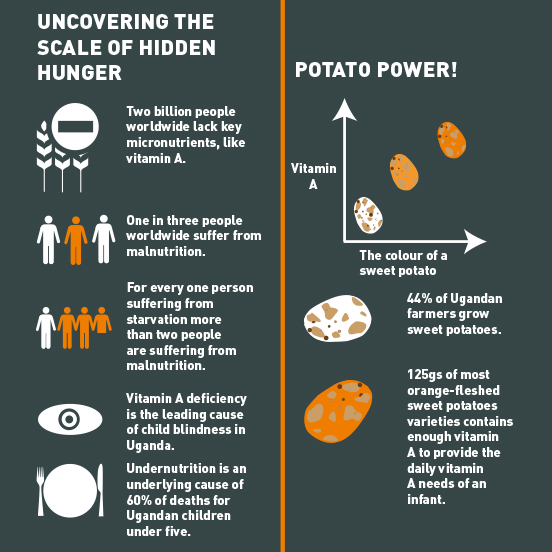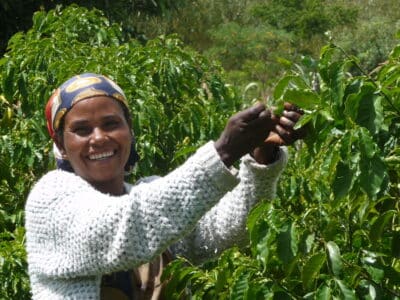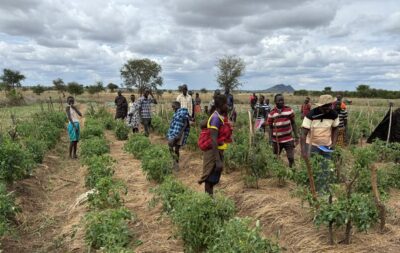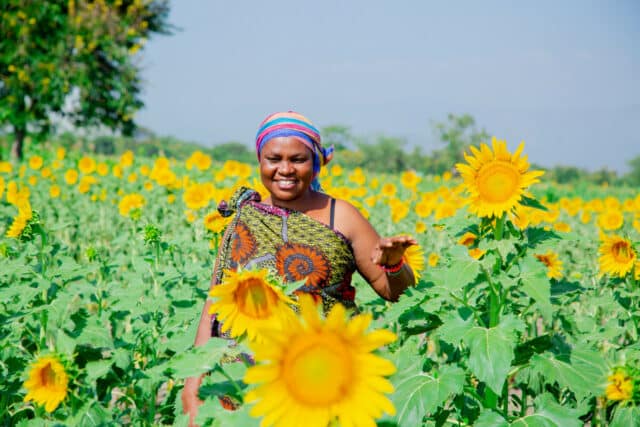Expert view
14 May 2018
Potato power: how a switch from white to orange is tackling hidden hunger

By Sam Viney, Communications and Advocacy Officer
Despite their enormous contribution to combating hunger globally, smallholders are disproportionately vulnerable to malnutrition. New crop varieties are helping smallholders fight back against micronutrient deficiency.
Africa is the only region in the world where malnutrition is still rising. Whilst the continent has made great strides in tackling chronic hunger – a lack of calories – the reality is that millions of people do not have access to the food they need to live a full and active life.
Today millions of people in Africa suffer from micronutrient deficiencies: a lack of essential vitamins and minerals. People suffering from micronutrient deficiency can appear perfectly healthy and may not be aware of their condition, making detection and treatment difficult, and resulting in the silent epidemic earning the title “hidden hunger”.
Nonetheless, the consequences of hidden hunger are devastating. Micronutrient deficiency can have severe health consequences: blindness, stunted physical and cognitive development and even death. It can undermine economic development, causing a loss of productivity and reduced economic growth.
The magnitude of this problem is staggering, around 48% of children between the ages of six months and five years suffer from a lack of vitamin A. Despite their enormous contribution to food production, Africa’s small-scale farmers are disproportionately vulnerable to malnutrition.

Colouring in hidden hunger
Tackling a different kind of hunger requires us to think differently about the food that we grow and consume. Simply growing more food won’t resolve the issue, we must grow and consume different food.
Uganda’s love affair with the sweet potato spells out this dynamic neatly. Ugandans roast, fry, bake, chip and make bread out of sweet potato. The root’s popularity fuels demand: 44% of Ugandan farmers grow sweet potatoes.
Orange-fleshed sweet potatoes are the norm in Europe and America, but in Uganda sweet potatoes are normally white. The European and American variety owes its distinctive colour to high levels of vitamin A. Ugandans aren’t big fans of the “mushy” western variety, they prefer the taste of starchier white-fleshed sweet potatoes. The paler potato delivers calories but comparatively little in the way of vitamin A and other vital nutrients.
Micronutrient deficiencies, especially vitamin A, are prevalent in Uganda. A shortage of Vitamin A affects 36% of women under 45 and 38% of children in Uganda, making it the leading cause of preventable blindness in children.
Researchers at the HarvestPlus institute and the International Potato Centre realised that if they could convince vitamin A short groups to swap white sweet potatoes for their orange cousins it would significantly improve vitamin A intake and extinguish one of the drivers of hidden hunger.
Subsequently, scientists at HarvestPlus have bred, using natural techniques, a drought-tolerant orange-fleshed sweet potato that is packed with vitamin A that passes the Ugandan taste test.
The humble spud’s journey from lab to field represents the kind of solution-orientated thinking needed to tackle such a complicated problem. The “biofortification” process combines technical scientific expertise, plant breeding, with social thinking, taste and food preferences, to ensure that innovations work on the ground.
Improving production improves income and nutrition
Farm Africa’s Sweet potatoes for prosperity project in Teso sub-region, eastern Uganda helps sweet potato farmers transition from growing white-fleshed to orange-fleshed sweet potatoes.
Alongside introducing farmers to better varieties, we help farmers earn more from their agricultural efforts by helping them improve production, processing and marketing of sweet potatoes.
Poverty drives hidden hunger. If a person is struggling to make ends meet they tend to prioritise the consumption of staple foods, rich in energy, over non-staple foods, which traditionally contain micronutrients and allow for a varied and balanced diet.
In Teso the majority of people are poor and work in agriculture. Improving farming yields and profits is the surest way to generate higher incomes for the rural poor, allowing them to buy a range of nutritious foods.
Access to nutritious foods
A lack of processing facilities in Teso means that there are few opportunities to extend sweet potatoes’ shelf life. In partnership with the Soroti Potato Producers’ Association, we’ve built a sweet potato production centre where crops can be cut into chips and dried.
Processing sweet potatoes not only boosts farmers’ sales but offers a low-cost solution to improving the nutritional status of other, often vulnerable, groups. For example, dried chips are turned into flour and sold to hospitals and schools who make healthy bread and cakes.
When smallholders are provided with support to grow and sell biofortified crops a profound transformation occurs: they go from a group deeply affected by malnutrition to a group improving not only their own nutrition, but that of their customers.
Help farmers grow healthier, more prosperous futures by donating to Farm Africa’s Sweet potatoes appeal.




